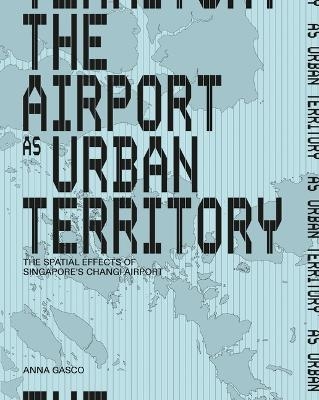
The Airport as Urban Territory
Nus Press (Verlag)
978-981-325-214-1 (ISBN)
Airports are major drivers of economic development. While firmly rooted in local landscapes, they serve as vital links to global networks. However, the massive infrastructures and externalities of airports—like noise and pollution—create tensions and present considerable challenges. What does this mean for spatial planning? What factors and stakeholders are involved? How can we better plan airports and design their relationships with urban development? Singapore’s Changi Airport regularly scores among the world’s best from travelers’ perspectives—but what about the impact on its city and surrounding region?
Drawing on a decade of research focused on Singapore and its cross-border region, this book offers an analysis of Changi Airport’s spatial influence at different scales and on different kinds of spaces, including rural areas, industrial and leisure zones, and the hinterlands of Singapore’s shiny metropolis. It uncovers the airport’s many actors, the complex networks of terrestrial linkages and interactions centered around the global hub, and the governance frameworks used to manage it. The result is a new framework for thinking about how airports interact with their territories and an illuminating exploration of territorial dependencies and their effects on everyday spaces.
Anna Gasco is head of urbanism at the Academy of Architecture at the Amsterdam University of the Arts in the Netherlands. She is an architect and urban designer with over twenty years of international experience in practice, research, and teaching.
Acknowledgements
List of Figures
Preface by Kees Christiaanse
The Urban Planning Rationale of Airports
Analytical Frame
Airport Urbanism?
Airports and Cities, a Multifaceted Relationship
Current Spatial Models of Airport-related Urban Developments
Enlarging the Frame: Singapore's Airport Urban Territory
The Singapore Case
A Centralised System
"Hinterlandisation", the SIJORI Cross-Border Region
Singapore's Flight Information Region (FIR), a History of Borders and Spatial Control
Tracing the Airport's Urban Territory
Multiple Actors
Specific Case Studies
Mobile Methods and Empirical Research
A Portrait Of Singapore Changi Airport
Atlas
Fieldwork Journey
A Airport as Destination
Airport Platform
Airport Periphery
Perishables Flows
High-value Flows
Tourism Flows
Empirical Explorations
The Airport Island
Early Developments of the Changi Area
The Path to Changi
Current Airport Layout
Location in the surrounding urban structure
Effects on City Planning
Position within regional transport networks
The Changi East Project
The Productive Landscape
Perishable Networks of Ornamental Flowers
Perishable Networks of Ornamental Fish
High-value Networks of Electronics
The Leisure Landscape
Cross-border Tourism Networks
Bintan Segregated Leisure Urbanisation
Exceptional Governance and related societal and environmental externalities
Spatial Typological Classification
INVESTIGATIONS
Changi Airport's Urban Territory: A Spatial Reading
Changi Extended Airport Region: Limitations and Potentials
The Emergence of a New Image: Underlying Parameters and Typological Reading
Outlook and Concepts for Better Airport-related Developments Bibliography Index
Bibliography
Index
| Erscheinungsdatum | 21.08.2024 |
|---|---|
| Zusatzinfo | 13 maps, 144 figures |
| Verlagsort | Singapore |
| Sprache | englisch |
| Maße | 185 x 235 mm |
| Gewicht | 454 g |
| Themenwelt | Naturwissenschaften ► Geowissenschaften ► Geografie / Kartografie |
| Sozialwissenschaften ► Soziologie ► Empirische Sozialforschung | |
| Technik ► Architektur | |
| ISBN-10 | 981-325-214-6 / 9813252146 |
| ISBN-13 | 978-981-325-214-1 / 9789813252141 |
| Zustand | Neuware |
| Informationen gemäß Produktsicherheitsverordnung (GPSR) | |
| Haben Sie eine Frage zum Produkt? |
aus dem Bereich


